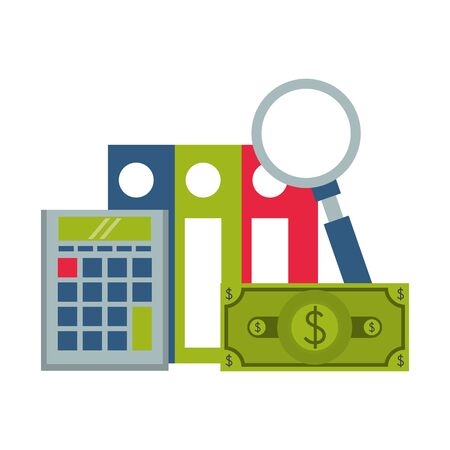Overview of PAYE in the UK
PAYE, or Pay As You Earn, is the primary method by which employees in the UK pay income tax and National Insurance contributions. Introduced by HM Revenue & Customs (HMRC), PAYE streamlines the process for both employers and employees by automatically deducting the appropriate amounts from an employee’s wages or salary each time they are paid. This system plays a crucial role in the UK tax framework, ensuring that tax liabilities are settled gradually throughout the year rather than as a lump sum at year-end. For employees, PAYE directly affects take-home pay and simplifies their tax obligations, as deductions are calculated based on individual tax codes and personal allowances. Understanding how PAYE operates is essential for anyone employed in the UK, as it determines not only how much tax is paid but also how net earnings are calculated and received.
2. How Income Tax and National Insurance are Calculated
In the UK, employees Income Tax and National Insurance contributions (NICs) are automatically deducted from their salary under the PAYE system. Understanding how these deductions are calculated is essential for managing your finances and ensuring you pay the correct amount.
Tax Codes Explained
Your tax code, which appears on your payslip, determines how much Income Tax is deducted from your earnings. The most common code for 2024/25 is 1257L, indicating that you have a standard Personal Allowance of £12,570. This means you do not pay Income Tax on the first £12,570 of your annual income. Other codes may apply if you receive benefits, have multiple jobs, or owe tax from previous years.
Income Tax Thresholds for 2024/25
| Band | Annual Income (£) | Tax Rate |
|---|---|---|
| Personal Allowance | Up to £12,570 | 0% |
| Basic Rate | £12,571–£50,270 | 20% |
| Higher Rate | £50,271–£125,140 | 40% |
| Additional Rate | Above £125,140 | 45% |
The amount of tax you pay depends on which thresholds your total income falls into after applying your tax code.
National Insurance Contributions (NICs)
NICS are also deducted through PAYE and help fund state benefits such as the NHS and State Pension. Employees typically pay Class 1 NICs based on their earnings.
| Earnings per Week (£) | NICS Rate (2024/25) |
|---|---|
| Below £242 | 0% |
| £242–£967 | 8% |
| Above £967 | 2% (on additional earnings) |
Your employer calculates these deductions each pay period and sends them directly to HMRC on your behalf.

3. Payslips and Deductions
Payslips are a crucial part of the PAYE system in the UK, providing employees with a detailed breakdown of their earnings and deductions each pay period. Understanding your payslip can help you keep track of your income, tax contributions, and other important financial details.
Understanding Your Payslip
Every time you are paid, your employer must provide you with a payslip (sometimes referred to as a wage slip) that outlines how your total pay is calculated and what deductions have been made. Typical information includes your gross pay, net pay, tax code, National Insurance number, and payment date. Payslips also display your year-to-date totals for tax and National Insurance contributions, giving you a clear picture of your cumulative payments throughout the tax year.
Common Deductions
The main deductions you will usually see on your payslip are Income Tax and National Insurance Contributions (NICs). Depending on your circumstances, there may be additional deductions such as pension contributions (if you are enrolled in a workplace pension scheme), student loan repayments, or other voluntary deductions like union fees or charity donations. Each deduction should be clearly labelled so you can easily identify what has been taken from your pay and why.
Checking for Accuracy
It’s important to regularly check your payslip for accuracy, ensuring that the correct tax code has been applied and all deductions are legitimate. If you notice any discrepancies—such as unexpected deductions or an incorrect tax code—you should raise these with your payroll department or HMRC promptly. Keeping accurate records of your payslips can also help if you need to reference them for future tax returns or financial planning.
4. Changing Jobs or Income and What It Means for PAYE
Switching jobs, taking on a second role, or experiencing changes in your salary can directly impact how the PAYE (Pay As You Earn) system operates for you as an employee in the UK. Understanding these implications is crucial to ensure your tax is deducted correctly and that you avoid potential issues with HM Revenue & Customs (HMRC).
Changing Employers
When you move to a new employer, your previous employer should provide you with a P45 form. This document details how much you have earned and how much tax has been deducted during the current tax year. Pass this P45 to your new employer so they can apply the correct tax code and deductions. If you do not supply a P45, your new employer will use a starter checklist to determine your tax code, which may result in temporary emergency tax deductions until your records are updated.
Taking a Second Job
If you decide to take on a second job, it is important to note that each job will have its own PAYE scheme. Typically, your main job will use your personal allowance (the amount you can earn before paying income tax), while your second job will be taxed at the basic rate unless HMRC advises otherwise. The table below outlines how allowances and tax codes are usually applied:
| Scenario | Personal Allowance Applied? | Typical Tax Code Used |
|---|---|---|
| Main Job | Yes | Standard Tax Code (e.g., 1257L) |
| Second Job | No | BR (Basic Rate) |
Changes in Salary or Working Hours
If your pay increases or decreases—whether through a pay rise, bonus, reduction in hours, or unpaid leave—your PAYE deductions will adjust automatically. Your employer reports your earnings in real time to HMRC via the Real Time Information (RTI) system, ensuring any changes are reflected in your monthly or weekly payslip.
Key Points to Remember:
- If you notice unexpected changes in your take-home pay after switching jobs or taking on extra work, check your payslip for the correct tax code.
- Contact HMRC if you believe you are being taxed incorrectly—especially if emergency tax is being applied.
- Always keep copies of relevant documents such as P45s and P60s for future reference and for completing self-assessment returns if required.
By understanding these processes, employees in the UK can minimise errors and ensure their tax obligations are managed smoothly under the PAYE system.
5. Dealing with Common PAYE Issues
Even though the PAYE system is designed to be straightforward for employees, it’s not uncommon to encounter issues such as being on the wrong tax code, overpaying or underpaying tax, or needing to update your personal details. Here’s how to address these common problems effectively:
If You Think You’re on the Wrong Tax Code
Your tax code determines how much Income Tax is deducted from your wages. If you believe your tax code is incorrect—perhaps after a change of job, benefits, or personal circumstances—it’s crucial to act promptly. Check your payslip and compare your tax code with what HMRC has issued. If there’s a discrepancy, contact HMRC directly or use their online services to request a review. Provide them with accurate information about your employment and any benefits you receive.
If You Have Overpaid Tax
Overpayments can happen if you have more than one job, change jobs during the year, or are put on an emergency tax code. If you notice that too much tax has been deducted, gather your P60 (end-of-year certificate) and recent payslips. You can claim a refund by contacting HMRC online or by post. In many cases, HMRC will automatically correct overpayments at the end of the tax year, but it’s wise to follow up if you think you’re due a refund sooner.
If You Have Underpaid Tax
Underpayments usually arise from changes in circumstances that aren’t updated in time or errors in coding. If HMRC identifies an underpayment, they’ll typically notify you via a P800 letter and explain how they plan to collect the owed amount—often through an adjustment to your future tax codes (known as ‘coding out’). Review any letters carefully and contact HMRC if you believe there has been a mistake or if repaying the amount causes financial hardship; they may allow payment in instalments.
Updating Your Personal Details
Keeping your details up-to-date is essential for PAYE accuracy. Inform your employer and HMRC promptly if you move house, change your name, switch jobs, or experience changes affecting your tax situation (such as receiving workplace benefits). Use HMRC’s online services or call their helpline for updates. This helps prevent miscommunication and ensures your tax deductions remain correct.
Professional Advice
If you’re unsure about any aspect of PAYE or need guidance on complex situations—such as multiple incomes or non-standard benefits—it may be worthwhile to consult a qualified accountant or payroll advisor familiar with UK regulations. They can help resolve disputes with HMRC and optimise your tax position.
6. End of Year: P60s, P45s, and Tax Returns
As the tax year draws to a close in the UK, it’s essential for employees to understand the key documents associated with PAYE (Pay As You Earn). These end-of-year documents not only summarise your income and tax paid but also play a crucial role if you change jobs or need to complete a Self Assessment tax return.
P60: Your Annual Summary
The P60 is issued by your employer after the end of each tax year (5 April). It provides a summary of your total pay and the amount of tax and National Insurance contributions deducted through PAYE. This document is vital for keeping track of your tax affairs, applying for tax credits, or proving your income when seeking a mortgage or loan.
P45: Changing Jobs
If you leave your job during the tax year, your employer will provide you with a P45. This document details your earnings and tax paid up to the point of leaving. When starting a new job, you’ll give your new employer the P45 so they can ensure you’re taxed correctly going forward. If you do not have a P45, your new employer may use a Starter Checklist to determine your correct tax code.
Self Assessment Tax Returns: Who Needs Them?
Most employees paying tax through PAYE don’t need to file a Self Assessment return. However, there are situations where it becomes necessary. You may need to complete a Self Assessment if you have untaxed income (such as from property rental or investments), if you’re self-employed in addition to being employed, or if HMRC specifically requests one. It’s important to check HMRC guidance each year to see if your circumstances require you to submit a return.
Key Points for Employees
- Keep all P60 and P45 documents safe for at least 22 months after the end of the relevant tax year.
- If you think you’ve paid too much or too little tax, these documents will help resolve any discrepancies with HMRC.
- Check with HMRC or seek professional advice if you’re unsure whether you need to file a Self Assessment return.
Understanding these end-of-year processes helps ensure that your tax affairs remain in order and that you comply with all UK regulations under the PAYE system.


